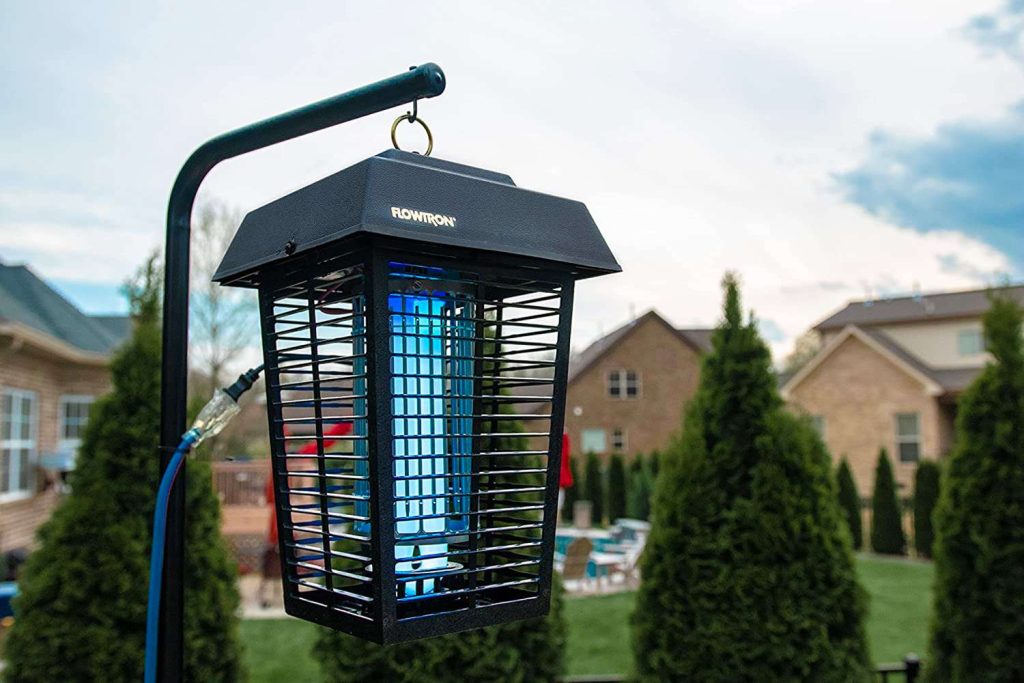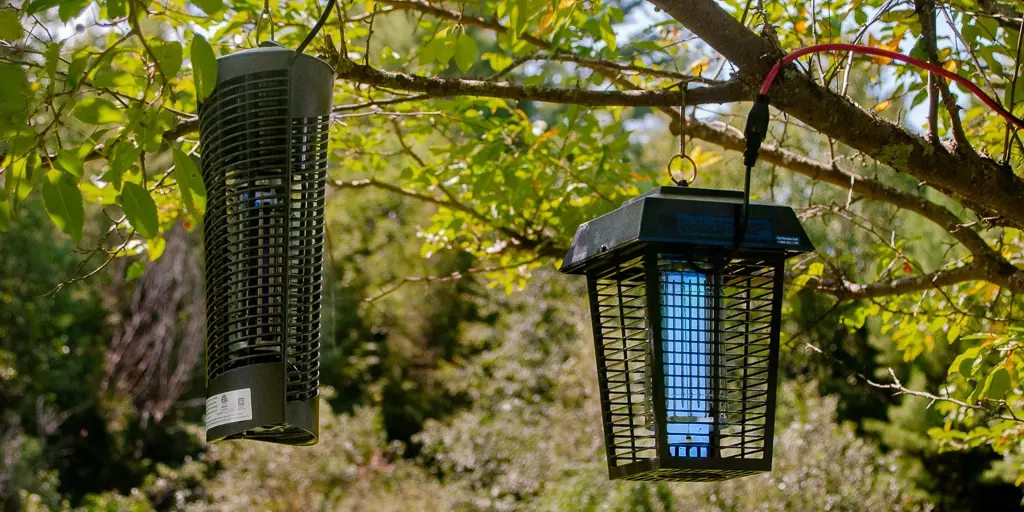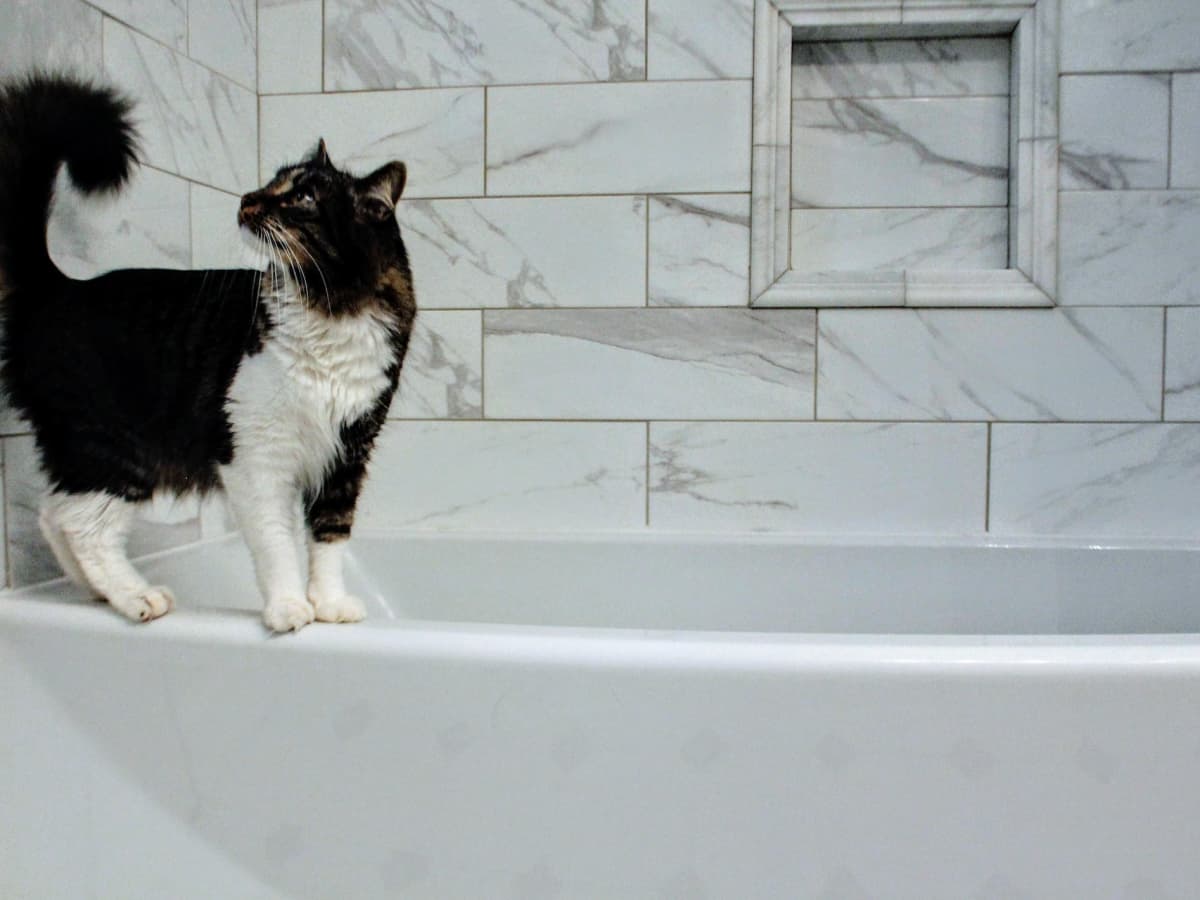Light alone generally doesn’t kill flies. However, certain types of light can attract flies, making capturing or killing them easier.
- Ultraviolet (UV) Light Traps: These are often used in commercial settings to attract and trap flies.
UV light attracts flies, and when they get close to the light source, they are either trapped on a sticky surface or killed by an electric grid. These devices are often called “bug zappers.”
Bug Zappers: Bug zappers use UV light to attract flies, and when the flies come into contact with an electrified grid, they are electrocuted and killed. This is a more aggressive method for eliminating flies.
Flypaper Strips: Flypaper strips are sticky and attract flies, making them an effective way to catch and kill flies, even though they are not a source of light.
Ultraviolet LED Traps: Some modern traps use energy-efficient UV LED lights to attract flies. These lights are less energy-consuming and have a longer lifespan compared to traditional UV bulbs.
How Ultraviolet Light Kills Flies

The Mechanism of Action Behind UV Fly Zappers:
Ultraviolet (UV) fly zappers are designed to attract and kill flies using a specific mechanism of action. Here’s how they work:
Light Attraction: UV fly zappers emit ultraviolet light, which is highly attractive to many flying insects, including flies. Flies have phototactic behavior, meaning they are naturally drawn to light sources.
Fly Approach: Flies are attracted to the UV light source and approach it, thinking it’s a source of food or warmth. They fly towards the light, following the UV spectrum.
Electrocution Grid: The zapper contains an electrified grid or mesh positioned near the UV light source. When flies get close to the light, they come into contact with the grid.
Electrocution and Kill: An electrical current is delivered to the fly upon touching the grid. This electric shock effectively electrocutes the fly, killing it instantly. The electrical discharge is usually not harmful to humans or pets because the grids are designed to be safe.
The Attraction and Eradication Process:
The attraction and eradication process in UV fly zappers can be summarized as follows:
Attraction: Flies are drawn to the UV light emitted by the device.
Approach: Flies fly towards the UV light, following their instinctual attraction to it.
Contact: As flies approach the light, they contact the electrified grid.
Electrocution: Upon contact, flies are electrocuted by the grid, leading to their immediate death.
Capture and Collection: In some UV fly zappers, flies may be collected in a tray or container for easy disposal. In others, they may simply fall to the ground beneath the zapper.
Types of UV Fly Control Devices:
There are various types of UV fly control devices, including:
Bug Zappers: These are standalone devices often used in outdoor settings. They feature a UV light source and an electrified grid, and they effectively reduce fly populations in the immediate vicinity.
UV Fly Traps: These are similar to bug zappers but are designed for indoor use. They can be wall-mounted or placed on surfaces and are used in homes or commercial settings to catch and kill flies.
UV LED Traps: Modern traps use energy-efficient UV LED lights instead of traditional UV bulbs. These are more energy-efficient and have a longer lifespan.
UV Fly Strips: These adhesive strips have a UV light source, attracting flies to the sticky surface, where they get caught and eventually die.
Commercial UV Fly Control Systems: Large-scale systems are used in commercial kitchens, restaurants, and food processing facilities to manage and control fly populations.
These systems may include multiple UV lights and traps strategically placed to capture flies and maintain hygiene.
FAQs
What kind of light can kill flies?
Ultraviolet (UV) light is highly effective at killing flies. Many bug zappers use UV light to attract and eliminate flies.
Do standard household lights kill flies?
No, standard household lights, such as incandescent or LED bulbs, do not typically kill flies. They are not designed for insect elimination.
Can fluorescent lights kill flies?
Some fluorescent lights emit UV wavelengths and can attract and kill flies. However, not all fluorescent lights have this effect.
How do bug zapper lights work to kill flies?
Bug zapper lights attract flies using UV light and then use an electric grid or a sticky surface to capture and kill the trapped flies.
Are there specific light wavelengths that are more effective in killing flies?
Yes, specific UV-A and UV-B wavelengths are highly effective at attracting and killing flies. These wavelengths are commonly used in bug zapper lights.
Can colored lights kill flies?
Colored red, green, or blue lights are not typically effective at killing flies. UV light is the most reliable choice for this purpose.
Do LED bug zapper lights work well?
Yes, LED bug zapper lights are efficient at attracting and killing flies. They use less energy and can be long-lasting.
Are bug zapper lights safe to use around people and pets?
Yes, Bug zapper lights are generally safe for humans and pets if you use them according to the manufacturer’s instructions. However, placing them in areas where they won’t be a nuisance is essential.
Do bug zapper lights attract beneficial insects?
Yes, bug zapper lights can attract beneficial insects such as moths, beetles, and flies, so be cautious when using them in garden settings.
Can bug zapper lights be used indoors?
Bug zapper lights designed for indoor use can be used inside to eliminate flies and other flying insects. Always follow safety guidelines.
Are there alternatives to bug zapper lights for killing flies?
Yes, alternatives include fly swatters, fly traps, and fly paper. These can be effective for fly control in various settings without the need for specialized lights.
Conclusion
When used in fly zappers and traps, UV light has proven to be a highly effective method for reducing and eliminating fly populations.
The mechanism of attraction and electrocution makes UV fly zappers an efficient and immediate solution to fly infestations. The ultraviolet light attracts flies, and upon contact with the electrified grid, flies are quickly and decisively eliminated.











